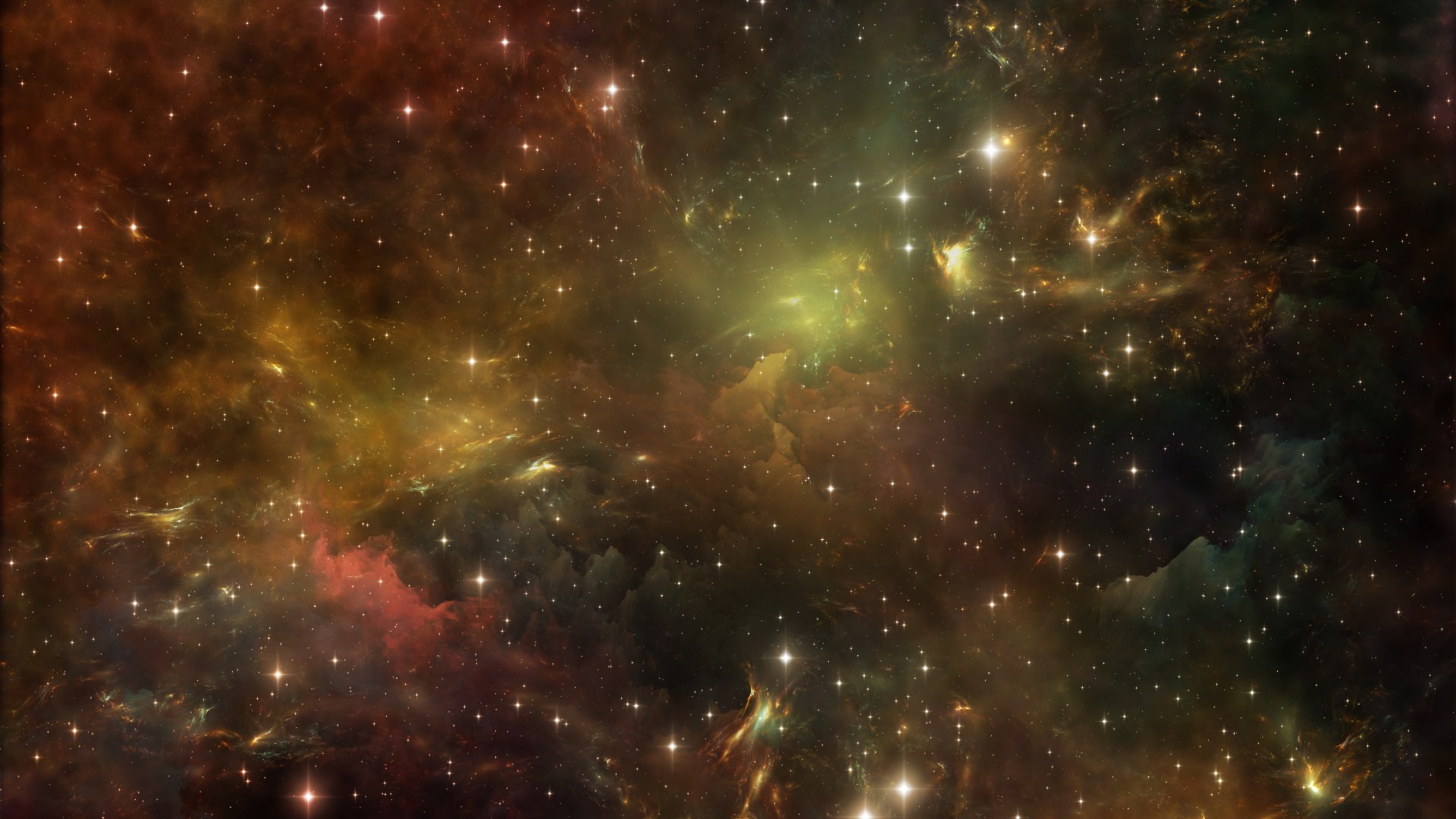Dark matter particle that may finally shed light on cosmic mystery the 'best of both worlds,' scientists say
A phase change in the early universe and particles called HYPERs could make dark matter detectable in future experiments.

A new dark matter model suggests a new candidate for the constituent particles of this mysterious form of matter that could mean it is detectable by future experiments.
Despite making up 85% of the matter in the universe, dark matter has remained frustratingly undetectable thanks to the fact that it doesn't seem to interact with light as does the "normal" everyday matter that makes up stars, planets, and us. The only way dark matter can be inferred currently is through its interaction with gravity, with this gravitational influence literally keeping galaxies from ripping apart as they spin.
The new model suggests that dark matter could be composed of what its authors call HighlY Interactive ParticlE Relics, or HYPERs. This new model suggests that after the formation of dark matter in the early universe, the strength with which it interacts with everyday baryonic matter would have increased abruptly. This HYPER model would have the consequence of making dark matter detectable in the current epoch of the universe while also offering an explanation of why dark matter is so abundant.
Related: What is dark matter?
The new model was devised by PRISMA+ Cluster of Excellence postdoctoral researcher Gilly Elor, alongside University of Michigan scientists Robert McGehee and Aaron Pierce.
"The HYPER model of dark matter asks and answers the question: How 'hyperactive' can light dark matter be?" McGehee told Space.com. "More technically, how frequently might we find light dark matter scattering off nuclei in near-future direct detection experiments that are sensitive to dark matter lighter than even a proton."
One of the current leading suspects in the hunt for dark matter candidates, are so-called "Weakly Interacting Massive Particles" or "WIMPs." The fact the search for these and other massive particles has been fruitless has led researchers to start proposing lighter particles like HYPERs as dark matter candidates.
Breaking space news, the latest updates on rocket launches, skywatching events and more!
Additionally, current dark matter investigations tend to neglect the idea of phase transitions, the change of one physical state to another such as the shift from a solid to a liquid, which are common in everyday matter.
The HYPER model instead hinges on a phase transition, demanding a transition in the early universe that changes how dark matter and everyday matter interact. The team behind the HYPER model thinks that this change of state could mean dark matter may actually be detectable in the universe as it is today.
"We found that concrete models of such dark matter may be realized if a special, new phase transition occurred in the early universe," McGehee said.
The "best of both worlds" for dark matter
The challenge faced by potential dark matter models currently is that if they suggest dark matter interacts strongly with baryonic matter, then the amount of dark matter formed in the early universe would be too small to conform with our observations of the universe. Conversely, models that produce the right amount of dark matter suggest interactions with baryonic matter that are too weak to be detected experimentally today.
The HYPER model with its phase transition suggests one single abrupt change in the interaction between dark matter and baryonic matter. This allows for what McGehee called "the best of both worlds" — both the right amount of dark matter to be created and a large enough interaction with everyday matter to be detectable.
Interactions in particle physics require a "mediator," a specific messenger particle, usually force-carrying bosons such as photons, which are messenger particles of electromagnetic force, to proceed.
Interactions between dark matter and ordinary matter would also require a mediator. The strength of the interaction would depend on the mass of the mediator particle with a larger mass meaning a weaker interaction. So the mediator in this case must be heavy enough for the correct amount of dark matter to form, while still being light enough to grant a detectable interaction with matter.
The aforementioned phase transition in the HYPER model sees the mass of the mediator particle suddenly decrease with this change occurring after the formation of dark matter. This allows for the inferred amount to be created, while simultaneously allowing for a boosted interaction with ordinary matter that leads to scattering events that could allow dark matter to be directly detectable.
While the HYPER model may address some of the challenges associated with developing a dark matter model, creating it was anything but easy.
"One thing that shocked me about this research was how hard it was to circumvent the usual constraints on dark matter," McGehee said. "When I first thought about how a phase transition could circumvent stringent cosmological constraints and provide a serious dark matter benchmark, I was extremely excited and naively expected to write a paper within a few-month time period.
"Years later, my collaborators and I had found that even the assumption of this phase transition was not enough to guarantee protection from the many serious bounds that any new model of dark matter must face and overcome."
McGehee pointed out that should a future dark matter detection experiment see what appears to be quite light dark matter scattering off nuclei frequently, the HYPER model may be the only model available to physicists to explain this observation.
"That would be an extremely exciting circumstance for myself and my co-authors," he concluded.
The team's research is published in the journal Physical Review Letters.
Follow us @Spacedotcom, or on Facebook and Instagram.

Robert Lea is a science journalist in the U.K. whose articles have been published in Physics World, New Scientist, Astronomy Magazine, All About Space, Newsweek and ZME Science. He also writes about science communication for Elsevier and the European Journal of Physics. Rob holds a bachelor of science degree in physics and astronomy from the U.K.’s Open University. Follow him on Twitter @sciencef1rst.

